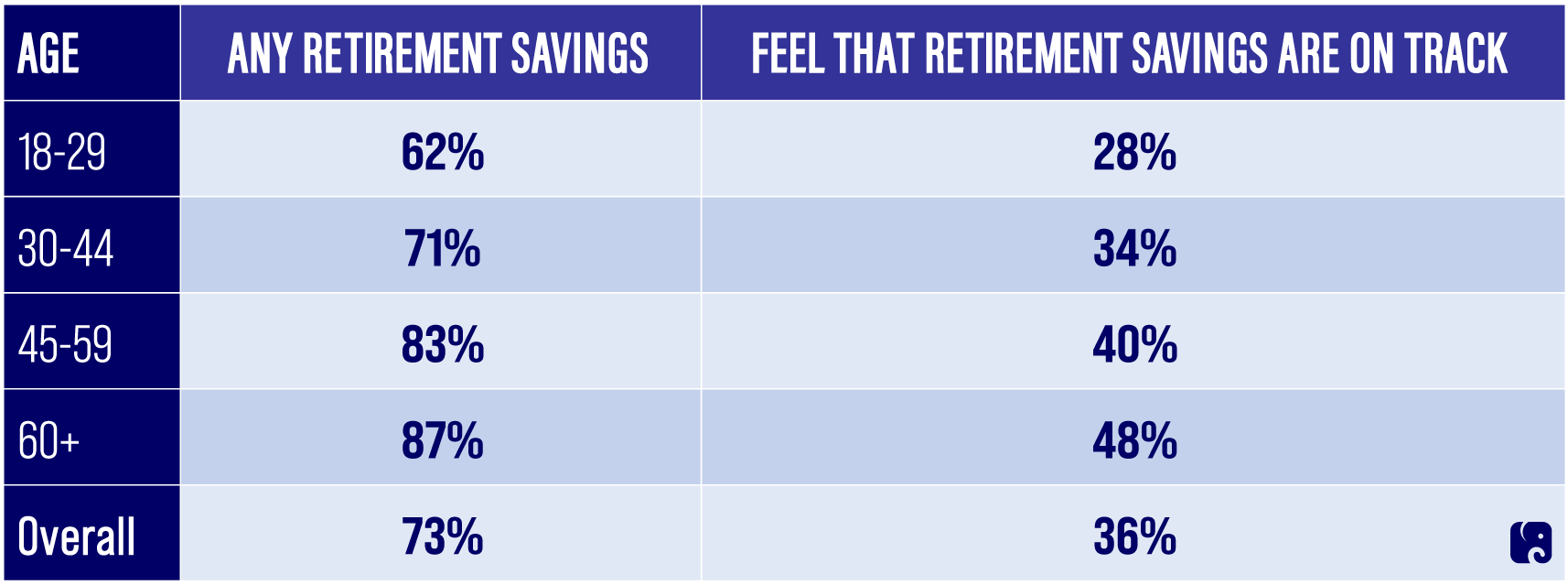Focusing on Retirement Security
KEY TAKEAWAYS
- In 2020, about three quarters of working Americans said they have retirement savings in some form, but only 36% thought their savings were on track.
- Most people with savings have accounts through their employers, such as a 401(k) or 403(b).
- Congress has previously worked to increase access to savings tools and enhance retirement security, and additional reforms are an area of bipartisan interest this year.
One part of the American dream for many people is reaching a point where they feel financially stable enough to retire. In the last five decades, the poverty rate among Americans who are over 65 years old has declined significantly – from 28.5% in 1966 to 9.0% in 2020 – even as the average life span climbed. Still, most working Americans express concerns about their ability to save enough to meet their retirement needs.
Americans Are Saving for Retirement, but Not Sure It’s Enough

In a 2020 survey by the Federal Reserve, about three quarters of Americans who have not yet retired said they have retirement savings in some form, and people are more likely to save as they get older. Among people under 30 years old, 62% said they have saved some money for retirement, compared to 83% of people aged 45 to 59.
But many Americans still expressed reservations about their financial preparedness for retirement, especially younger workers. Only 36% of workers thought their retirement savings were on track. And that was before inflation soared 10.5% in the past 15 months, eroding people’s paychecks and squeezing their finances.
Employer-sponsored defined contribution plans – like a 401(k) or 403(b) – are the most common savings tool used by Americans. Among people who are still working and have some retirement savings, 54% said they participate in one of these plans. Thirty-three percent have an individual retirement account, and 21% have a traditional defined benefit pension. Americans also hold retirement savings in businesses, real estate, and non-retirement accounts.
A different survey by the Fed found that half of American families – including about two-thirds of working age families – said they had a retirement account, with a median account value of $65,000. The survey found that participation in retirement accounts increased as income rose. In 2019, less than 40% of people in the bottom half of the income distribution owned a retirement account, compared to 90% of those in the top 10%. There were also significant savings gaps between Americans who had college degrees and those who did not, and between homeowners and renters.
building on Bipartisan success
Congress has previously worked to increase savings tools and enhance retirement security, with a focus on expanding access to employer-sponsored accounts and bolstering incentives for workers to save at all career stages.
The SECURE Act of 2019 – passed as part of the fiscal year 2020 omnibus appropriations law – increased the business tax credit for plan startup costs and made it easier for multiple small employers to sponsor a single retirement plan for their workers. It also increased the cap on automatic contributions to employer-sponsored plans to encourage employees to increase their retirement savings annually.
Senators have expressed interest in taking up other legislation to build on these reforms, and in March the House passed the Securing a Strong Retirement Act of 2022 by a vote of 414-5. Proponents argue that Congress can do more to remove regulatory barriers and reduce costs that prevent small businesses from offering retirement plans. Ideas to give young workers more incentive to save for their retirement, help older workers who want to catch up on their savings, and help gig workers save more also generally have bipartisan backing.
Americans should be able to expect that their years in the workforce will help provide them an independent, secure retirement. As Congress considers legislative priorities for the rest of the year, reforms to the nation’s retirement system are an area of bipartisan interest and opportunity.
Next Article Previous Article
